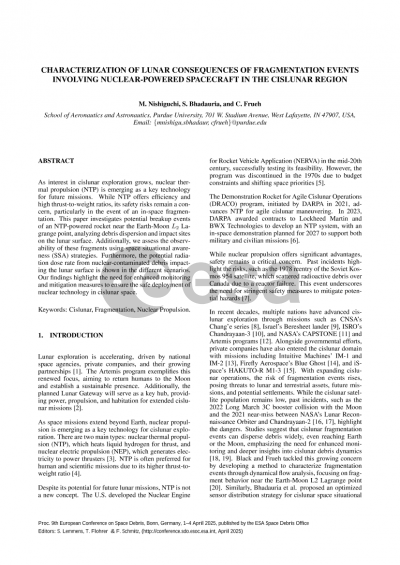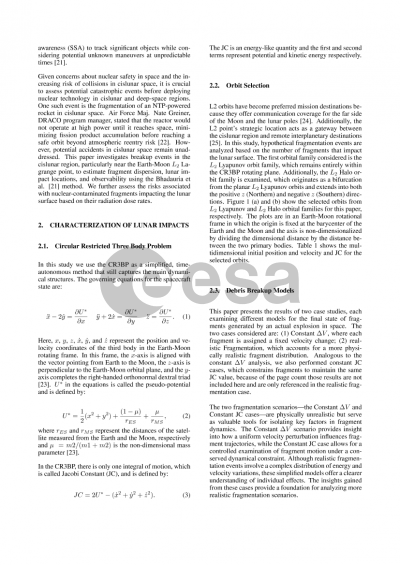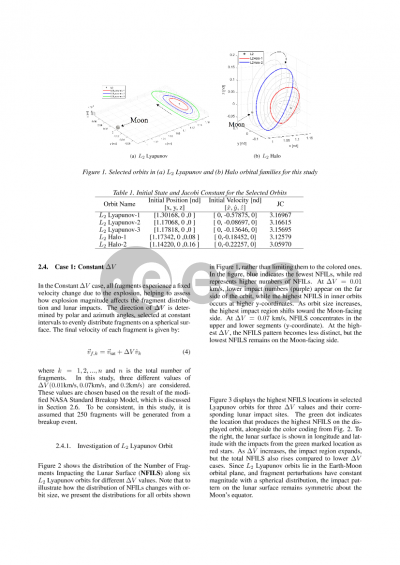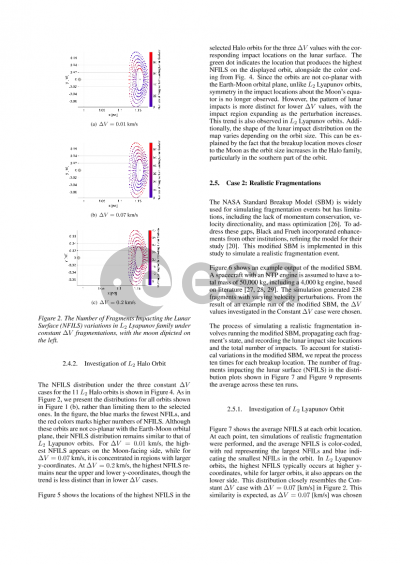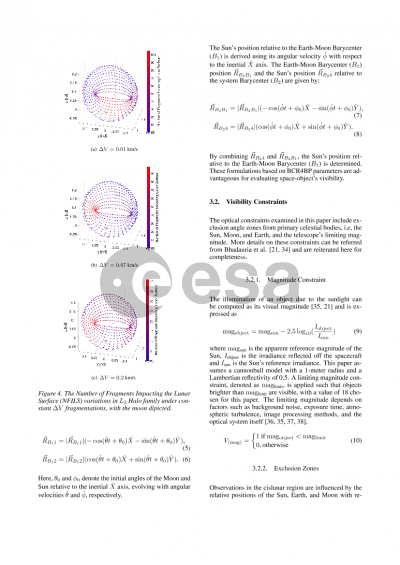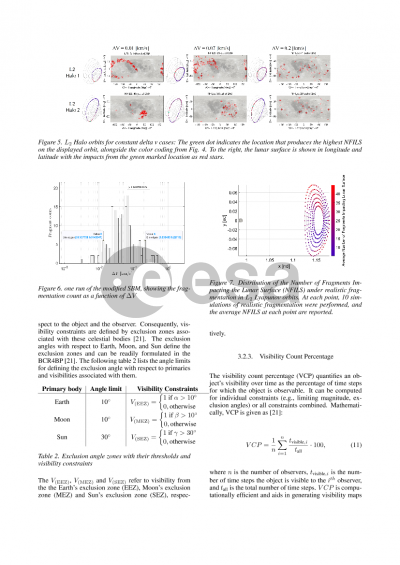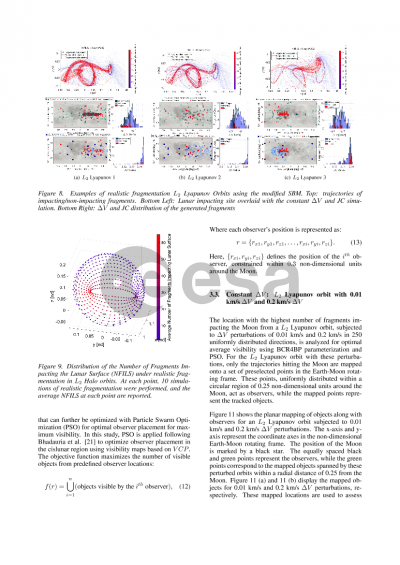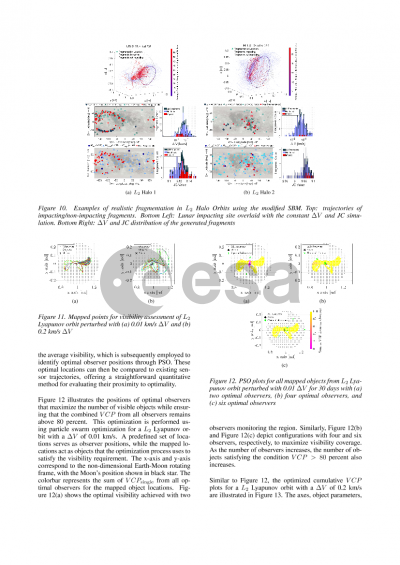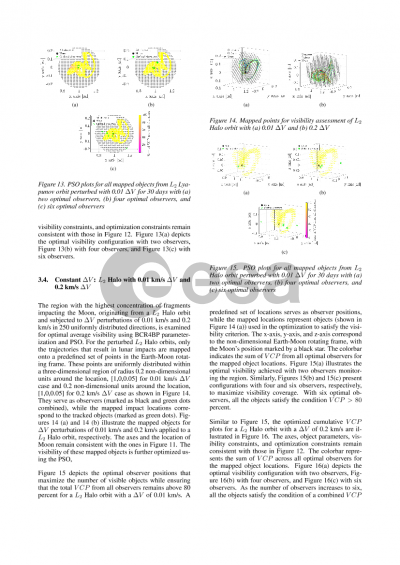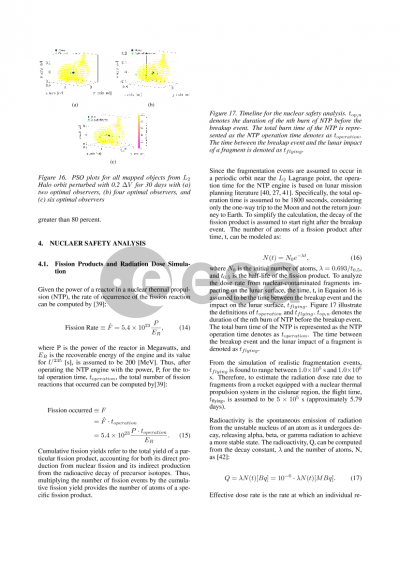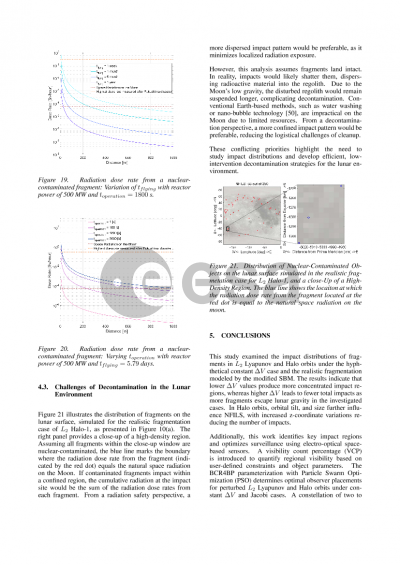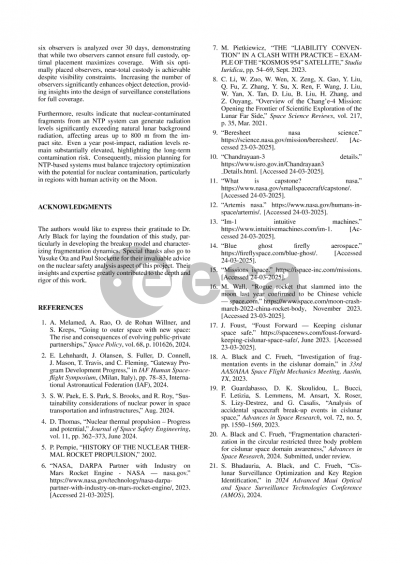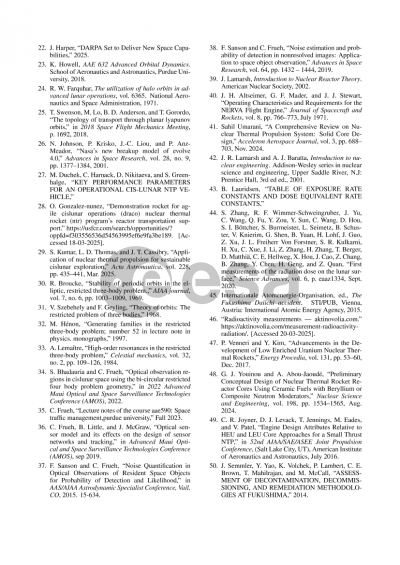Document details

Abstract
Nuclear propulsion has been proposed as a possible reliable, long-life span system for space exploration missions to the Moon and Mars since the 1950s and has now resurfaced again. In 2023, NASA signed a contract with the US Defense Advanced Research Projects Agency for a nuclear thermal rocket propulsion system to significantly cut travel time to Mars. As interest in lunar resources and exploration grows among different countries, it is expected that more nuclear reactors will be used as power and propulsion sources for spacecraft on lunar missions.
However, using nuclear power sources on board spacecraft risks creating nuclear-contaminated debris if there are failures such as collisions with space debris, explosions due to malfunctions during its operation, or containment failure upon uncontrolled reentry to Earth or to another solar system body. The multi-body system dynamics in cislunar space – the region influenced by both the Earth and Moon – are highly chaotic relative to small bodies like a spacecraft. Small deviations in initial state can yield large differences in trajectory behavior, making debris characterization in the cislunar domain particularly challenging. It is impossible to sample every feasible initial condition, and a more practical solution requires the ability to predict breakup behavior on a global scale and reduce the vastness of cislunar space to a more manageable volume. In this work, natural dynamical flow structures and tools in dynamical systems theory, including Poincaré maps and maximum stretching directions, are leveraged to grant a measure of predictability to fragment motion.
To validate the general results, debris-generating events at multiple locations along various
Earth-Moon transfer trajectories, including the Artemis I mission’s trans-lunar injection, as well as periodic orbits are simulated. Spacecraft fragmentation is simulated using a modified version of the NASA Standard Breakup Model, focusing on trackable objects larger than 10 cm. At locations along each trajectory, multiple trials of fragmentation simulation are conducted, and the average number of fragments reaching the lunar surface is reported. Additionally, the relationship between trajectory design and the dispersion area of fragments on the lunar surface is analyzed. Finally, a safety assessment is performed for future human lunar exploration. This involves simulation of the amount of fission products generated at the time of fragmentation, based on the design of a Small Modular Reactor (SMR). The radiation exposure from radioactive fragments is then evaluated under the assumption that all fission products are evenly distributed among the fragments. The radiation dose rate that a human would experience from the radioactive fragment is higher than the space radiation on the lunar surface and exceeds the average career dose limit for an astronaut, as determined by NASA, assuming a lunar mission duration of 7 days.
Preview
